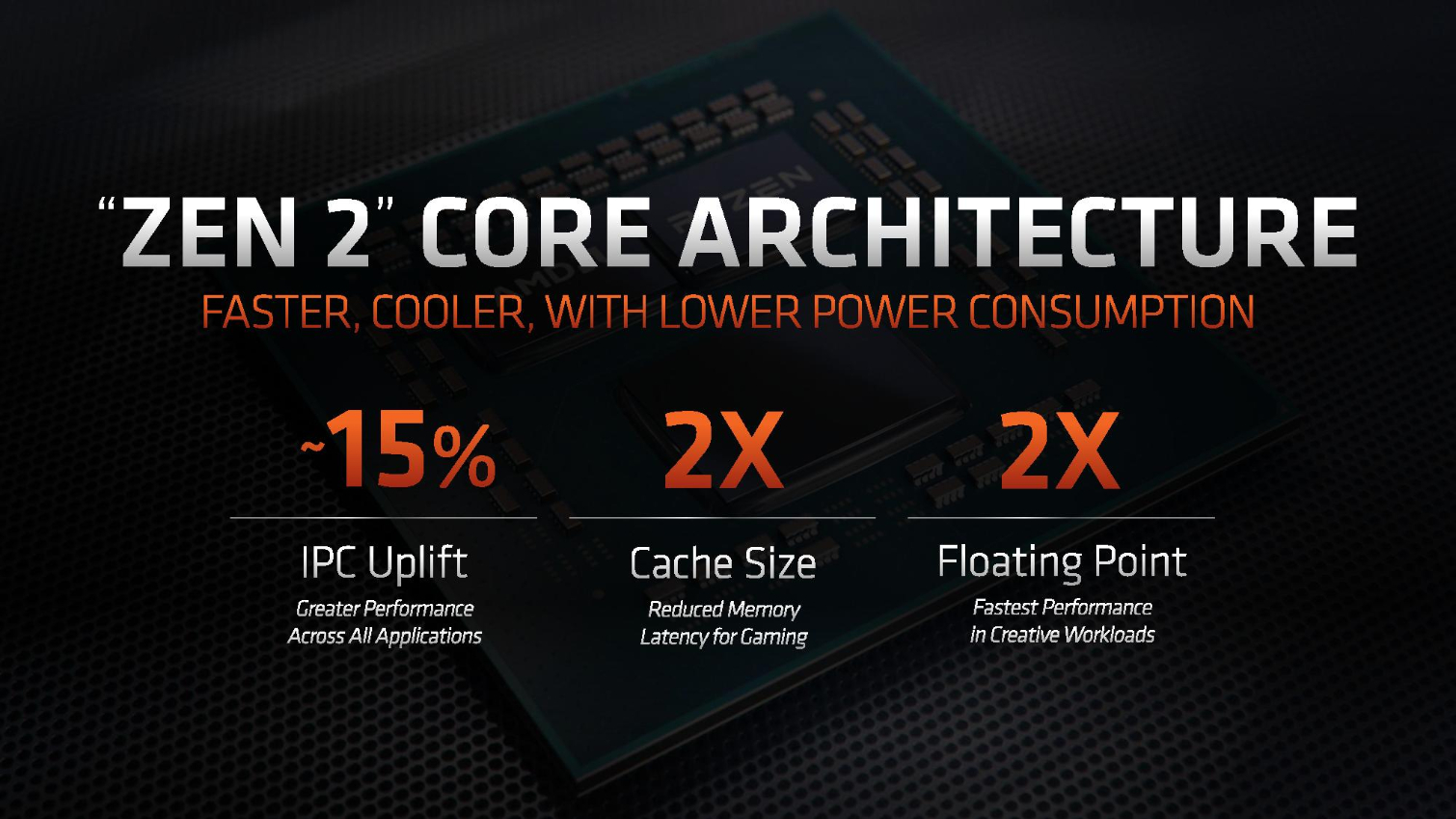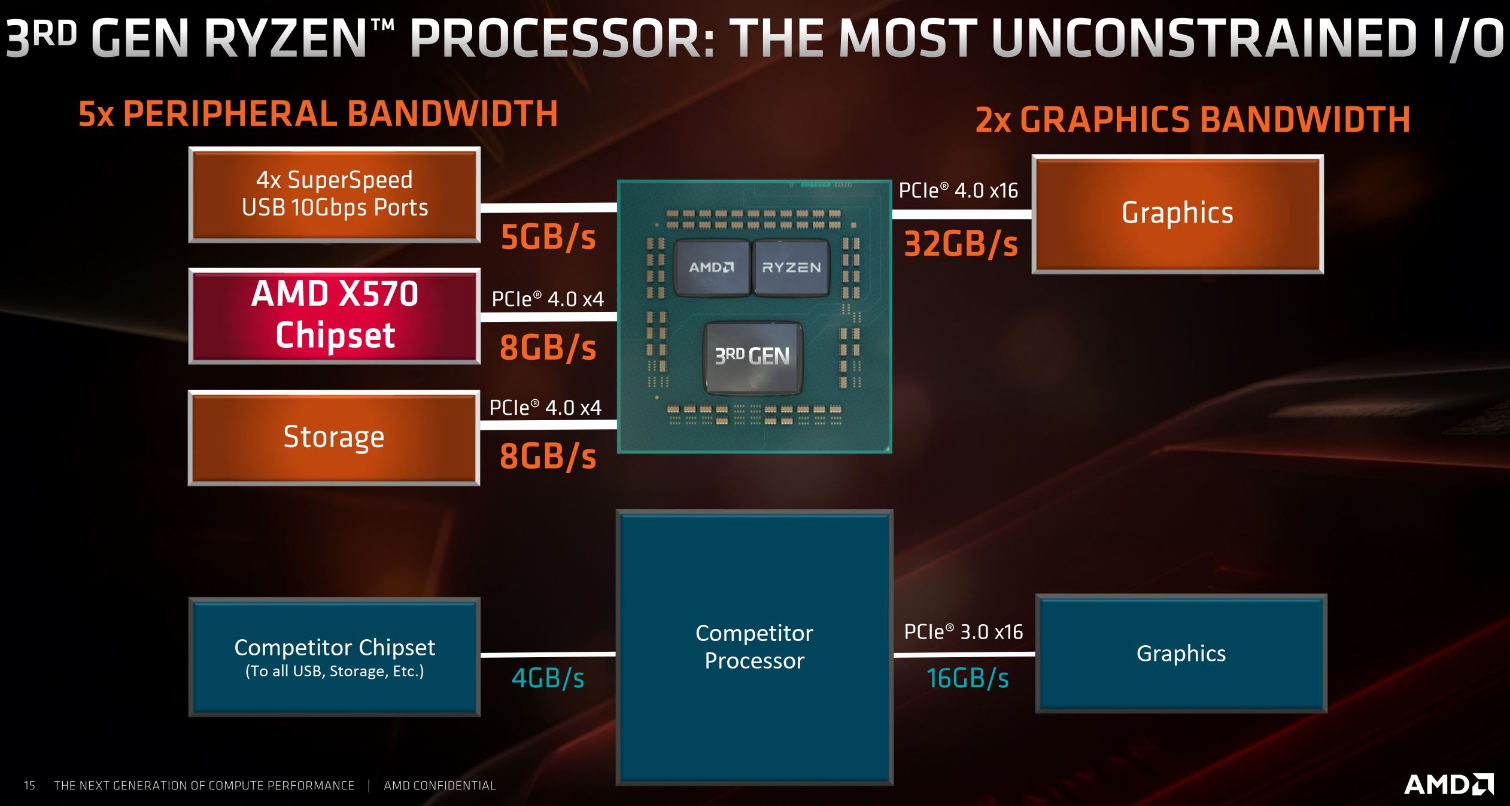AMD Ryzen 9 3900X and Ryzen 7 3700X Review: Zen 2 and 7nm Unleashed
Why you can trust Tom's Hardware
TSMC 7nm Process
AMD tapped TSMC's 7nm process for the Ryzen 3000 series processors. AMD's first-gen Ryzen processors debuted on GlobalFoundries' 14nm GPP node, but the 2000-series CPUs moved to GloFo's 12nm LP process technology. The ported-over design helped boost transistor performance, but did not affect die area or transistor density. As a result, Pinnacle Ridge's ~4.8 billion transistors and 213mm2 area remained the same as first-gen Ryzen.
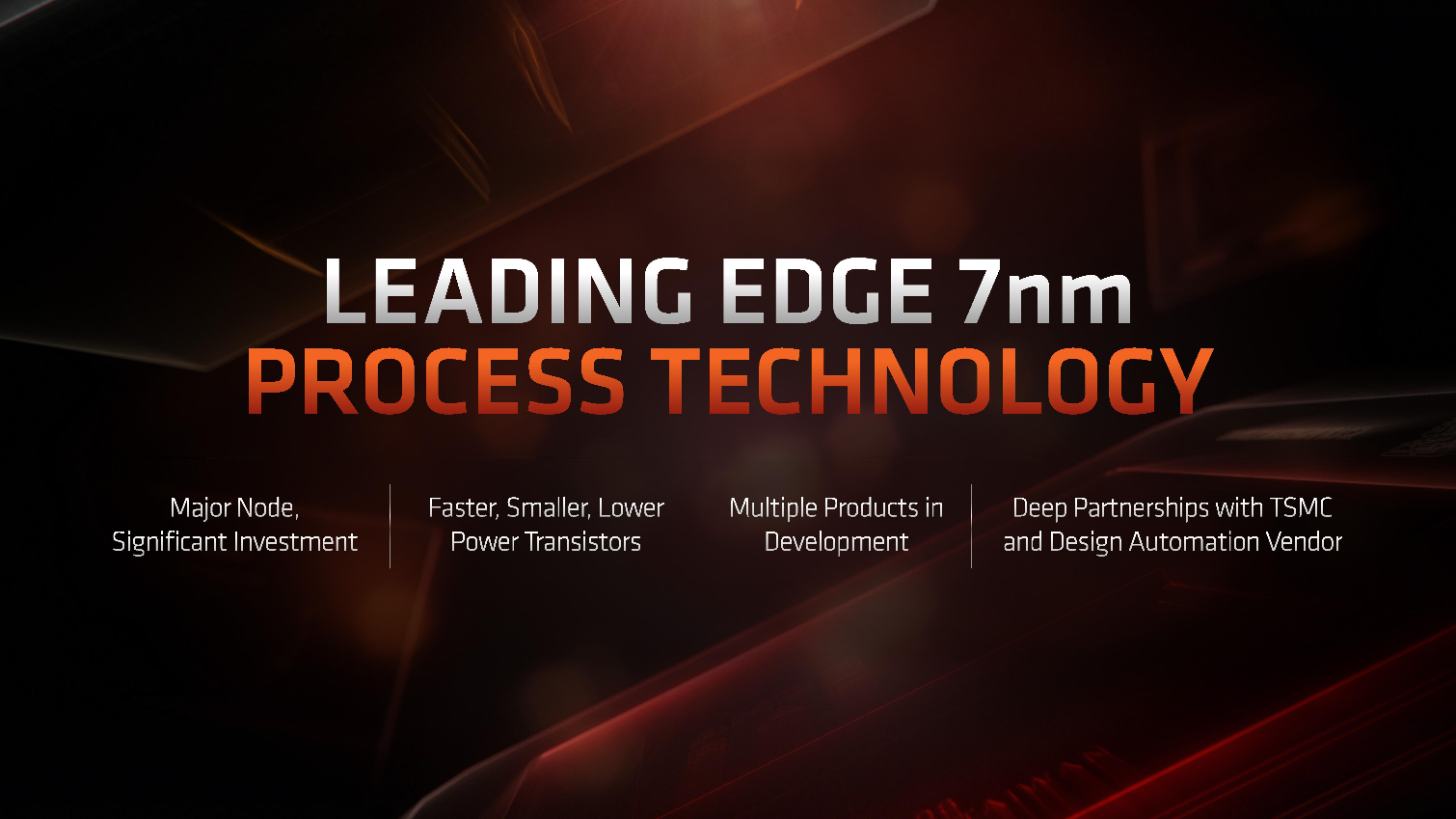

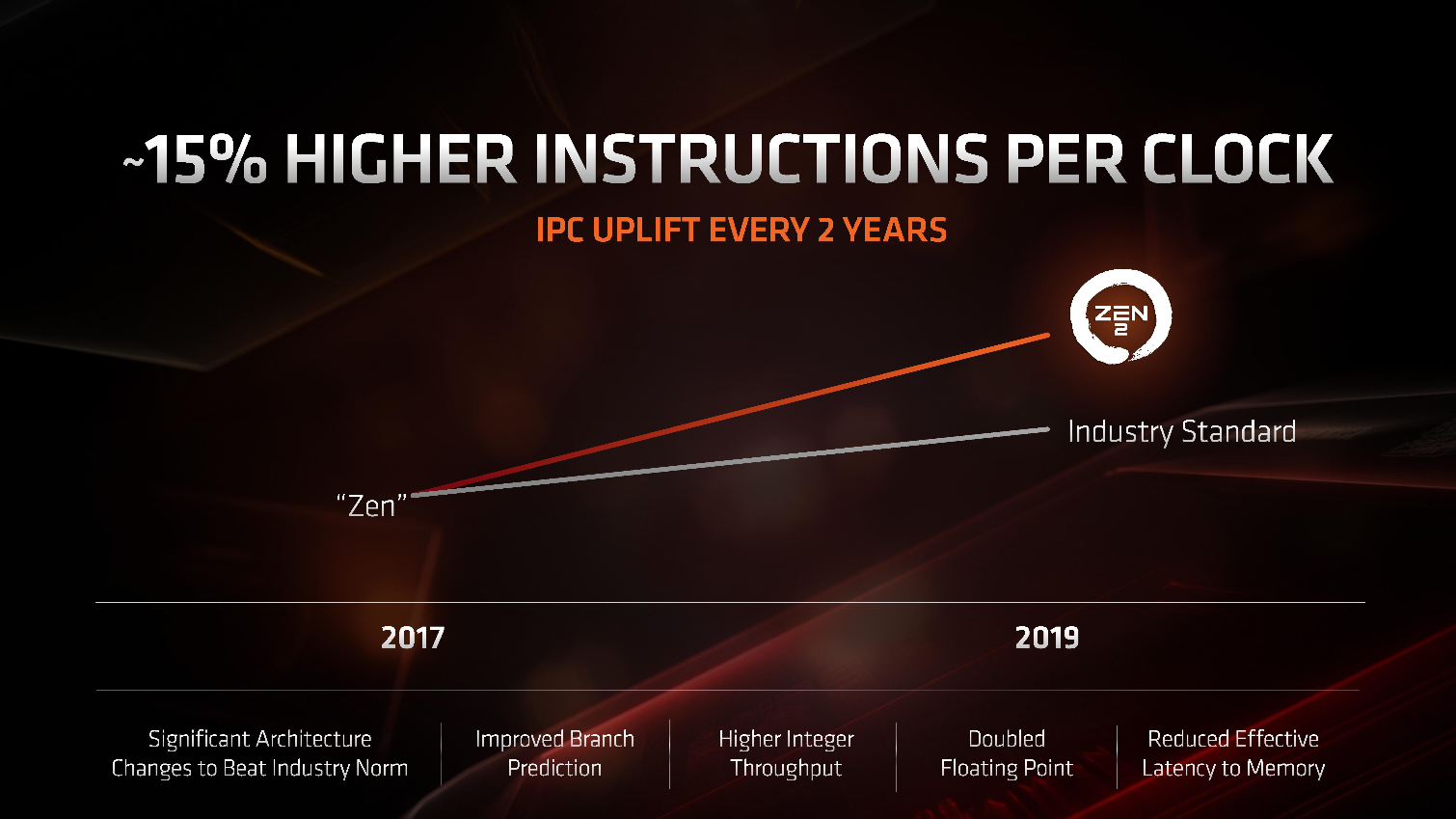
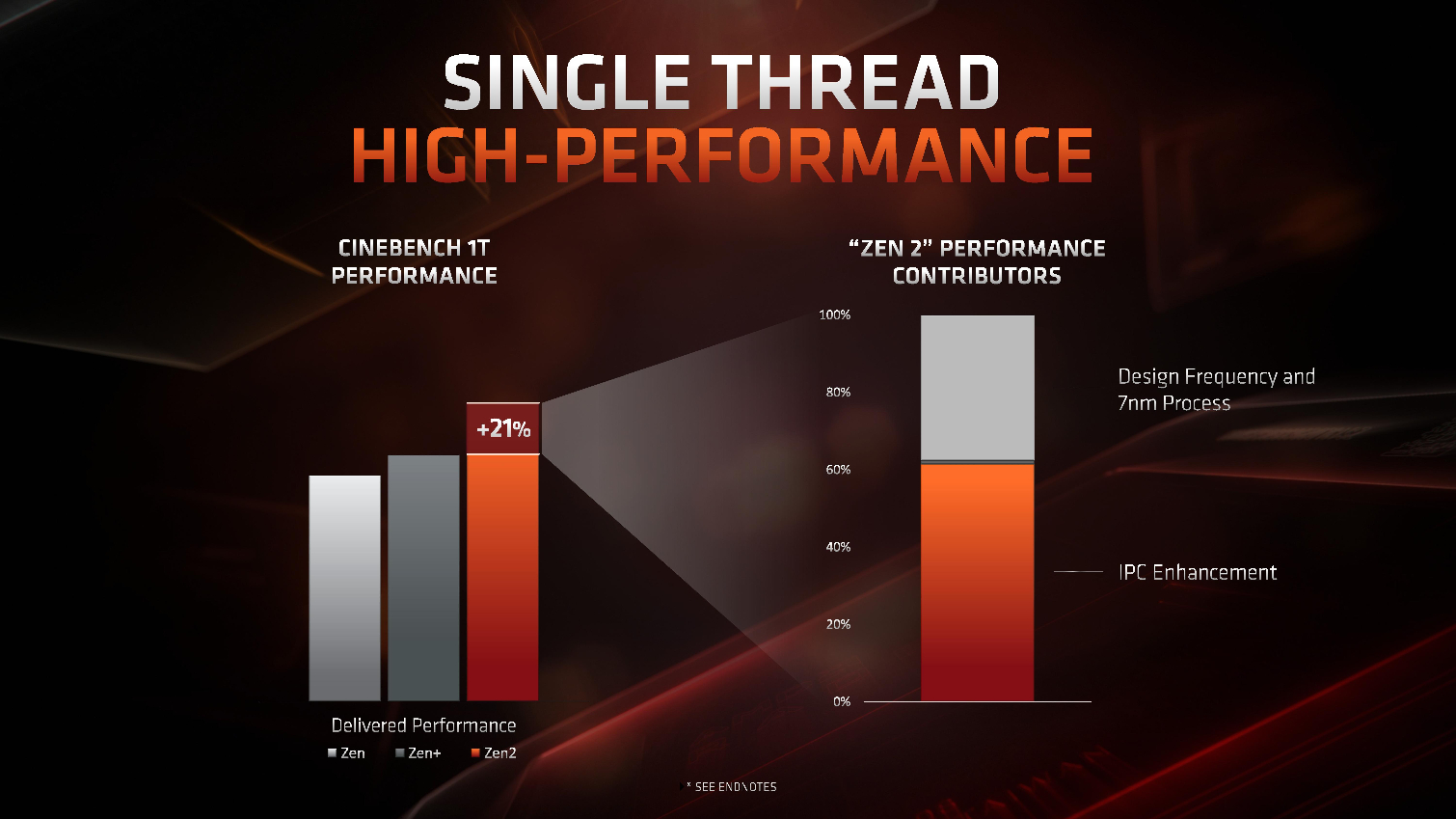
In contrast, TSMC's 7nm process represents a true shrink that provides twice the transistor density. AMD says the process allowed it to shrink the CCX by 29% relative to the 12nm process, which helped pave the way for Zen 2's enhancements, like the doubled L3 cache capacity and the ability to double core counts within the same package dimensions. It's also important to note that the company also removed I/O and memory controllers from the compute chiplet this time around, resulting in even smaller packages.
AMD also claims the process affords up to 350 more MHz of core frequency at the same voltage as the 12nm LP process. The new process also delivers on the energy efficiency front with up to 75% higher performance-per-watt compared to the 12nm LP process. AMD also says the 7nm node produces up to 58% higher performance-per-watt than Intel's aging, but highly refined, 14nm++ process, but be aware that the Ryzen 3000 chips still have a 12nm I/O die that contributes to the chip's overall power consumption.
AMD says that the 15% increase in IPC throughput from the Zen 2 microarchitecture serves up 60% of the performance improvements seen in the Ryzen 3000 series chips, with the remaining 40% coming from the 7nm process and frequency improvements.
Zen 2 Microarchitecture
Zen's modular and scalable design provides AMD with plenty of advantages in terms of cost and time to market, and fine-grained tuning to the architecture has yielded phenomenal results.
AMD has improved IPC by roughly 15% (though that can vary by workload), doubled the L3 cache size to keep data as close to the execution units as possible, and doubled floating point performance by expanding floating point bandwidth to 256-bit to improve performance with AVX2 instructions.
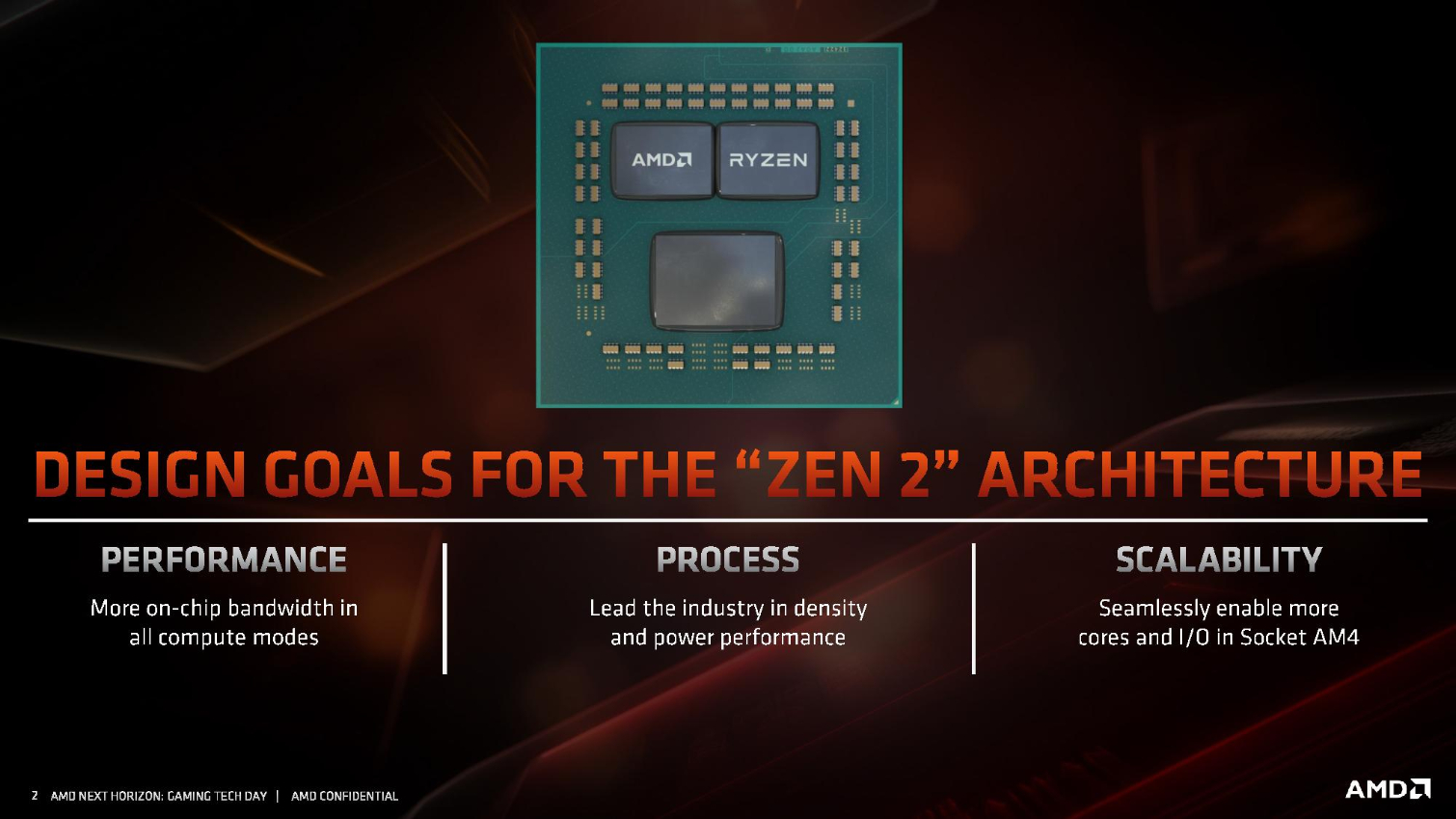
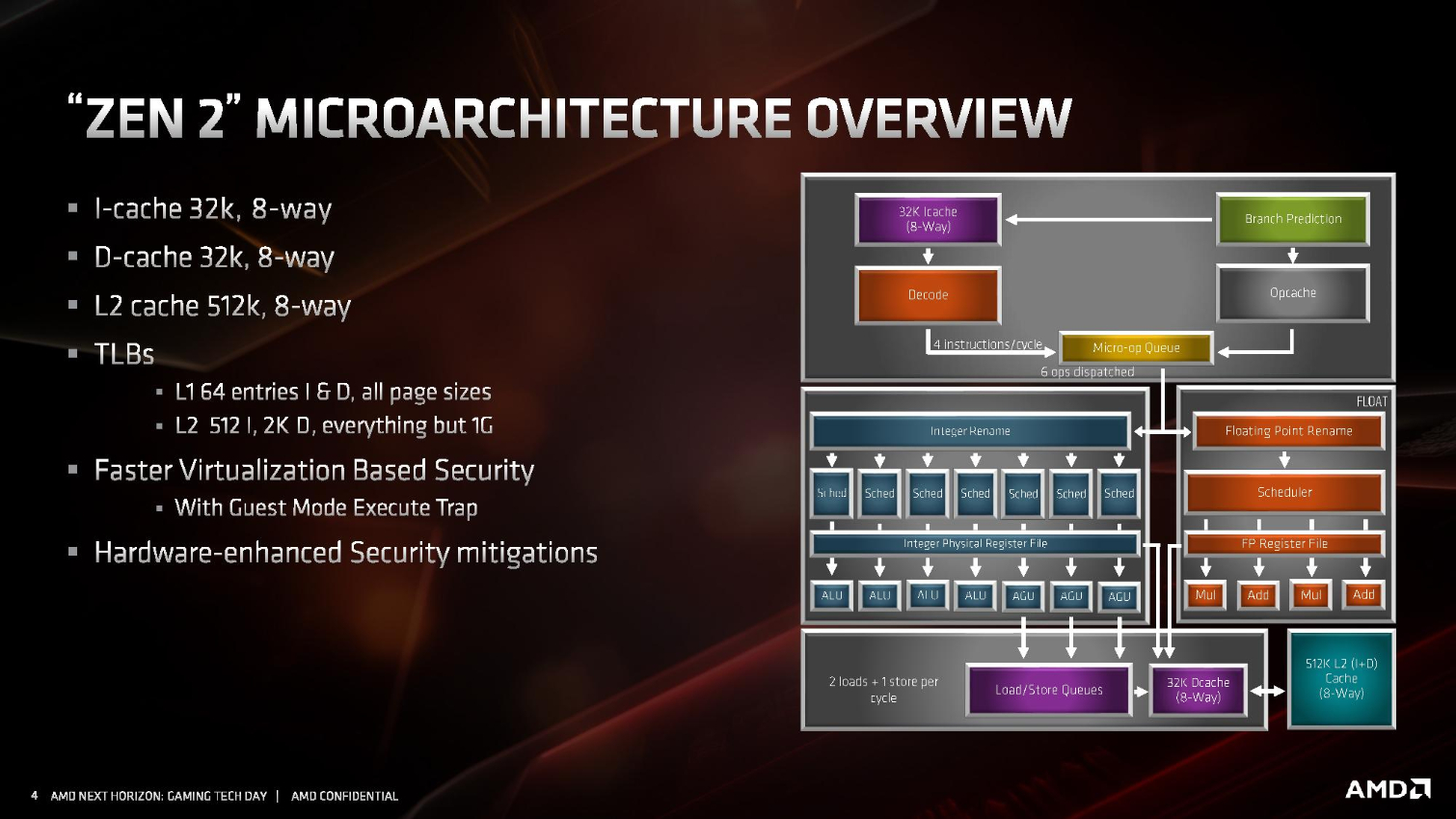
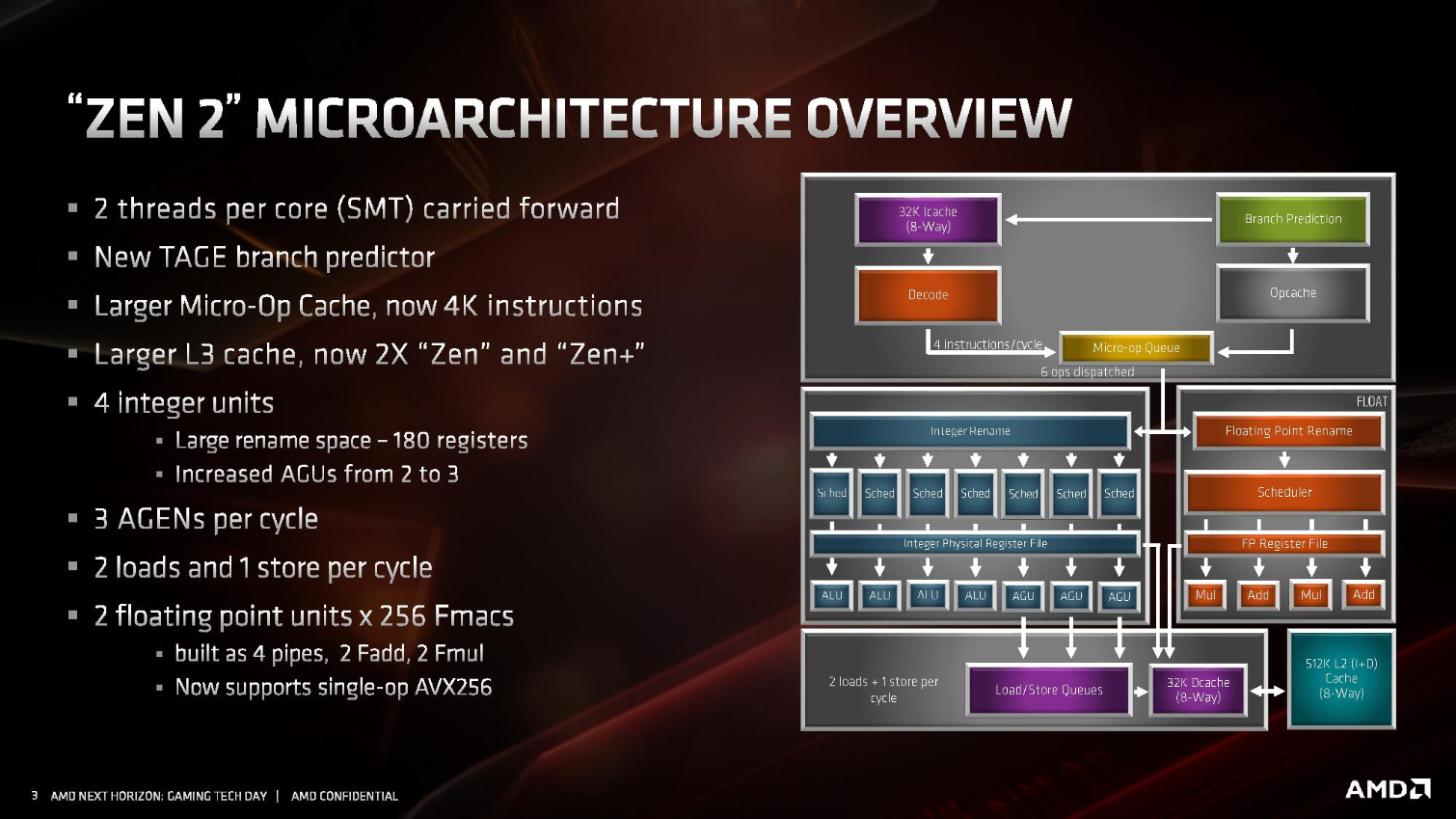
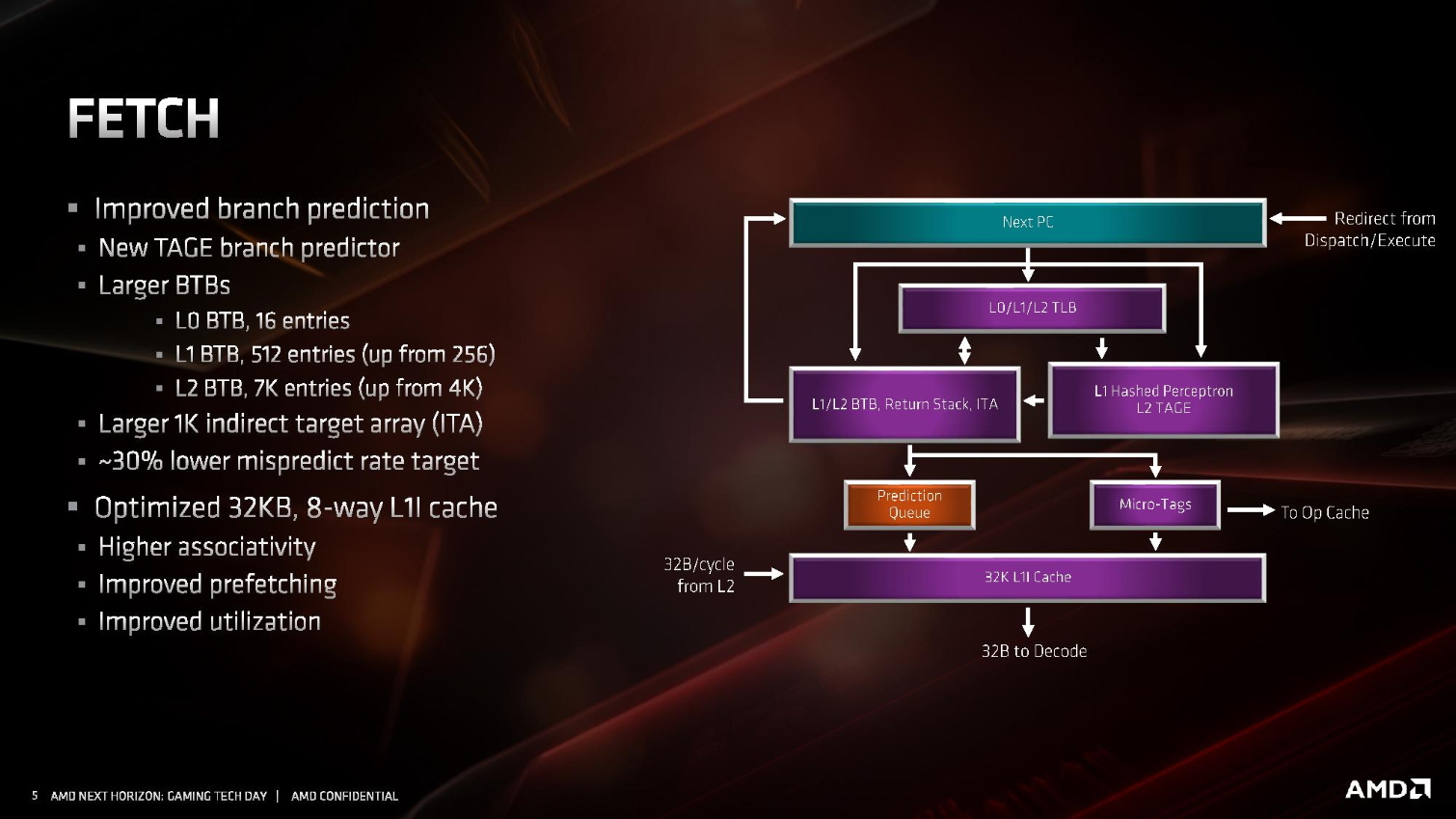

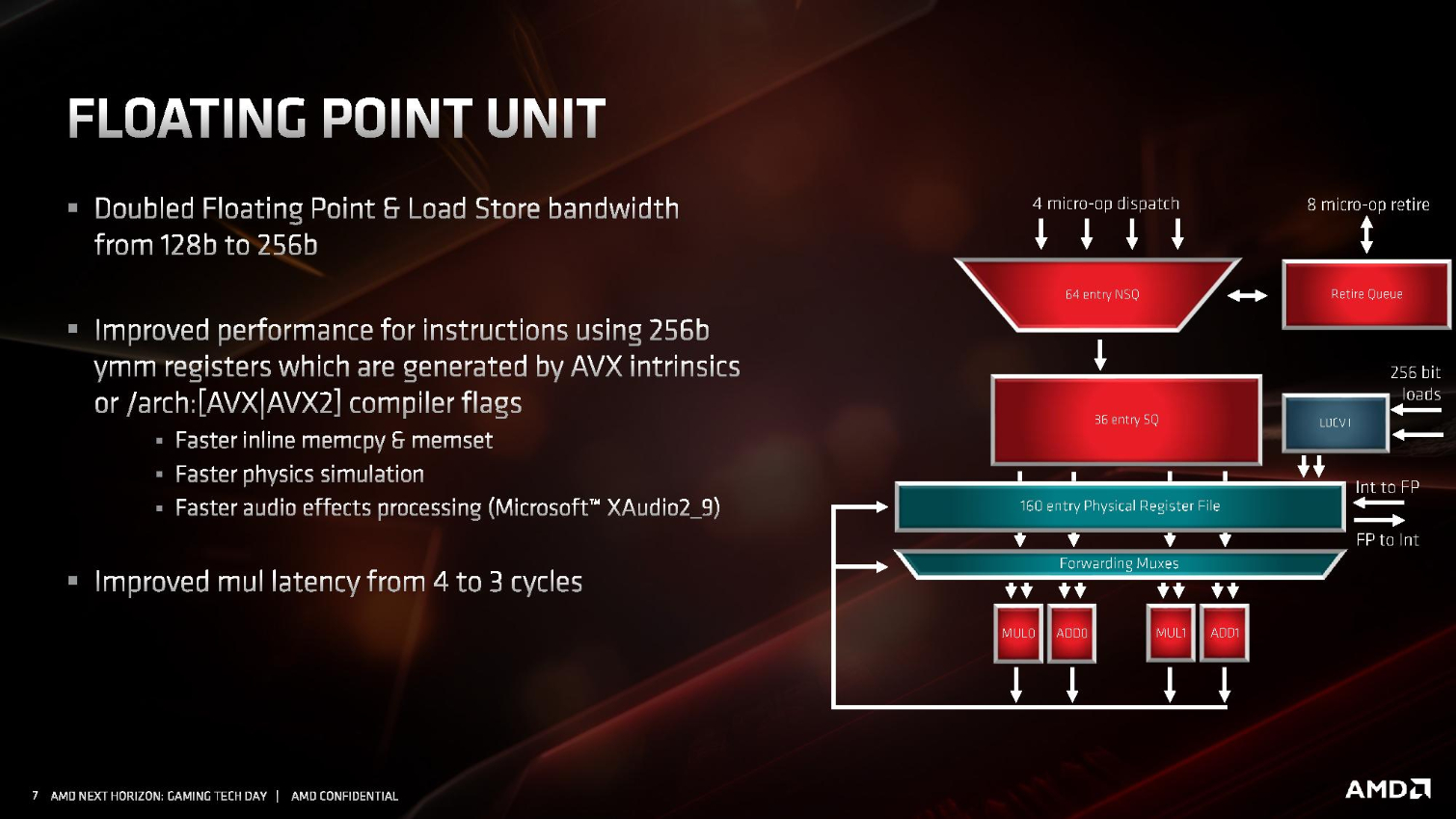
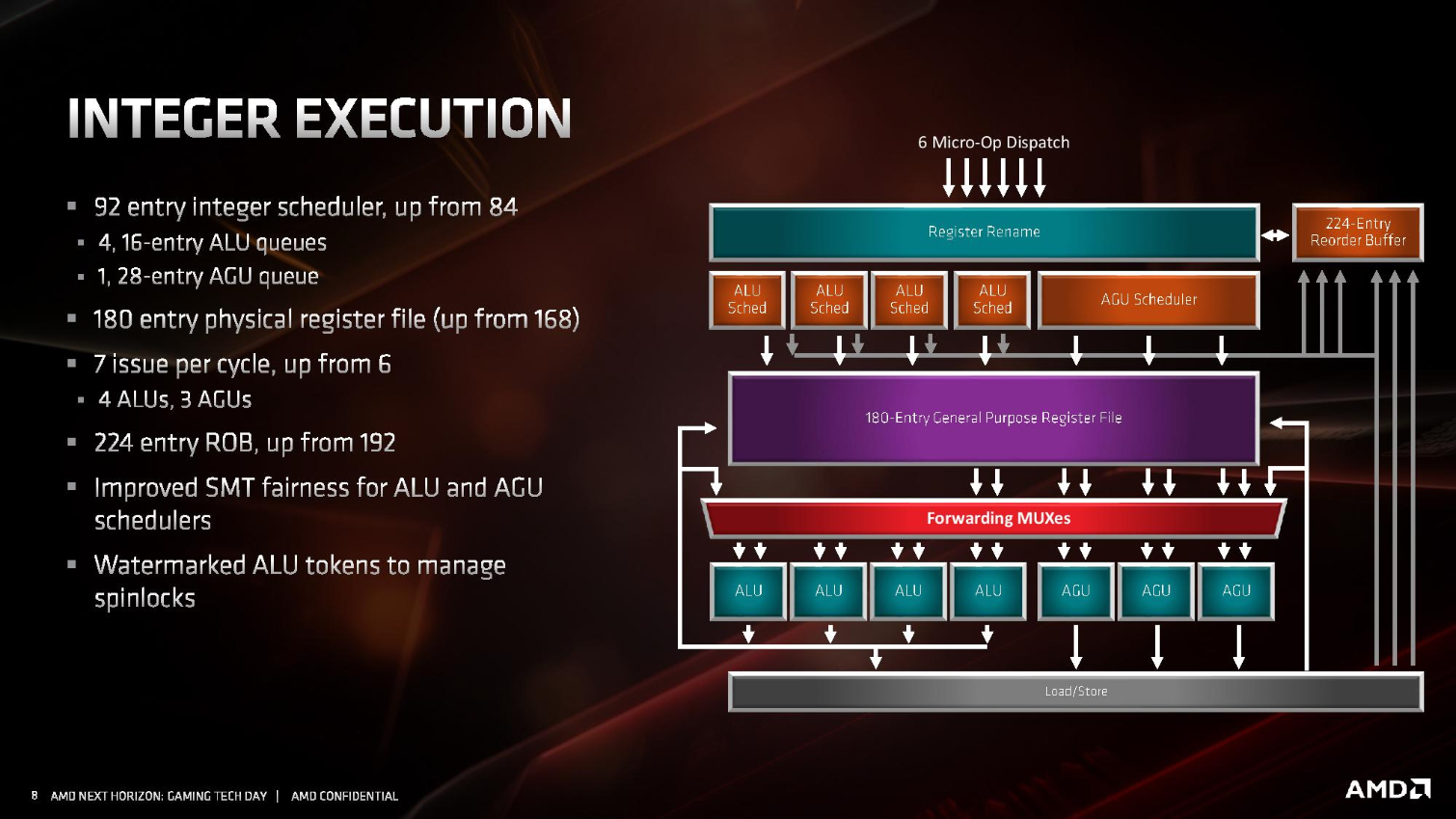
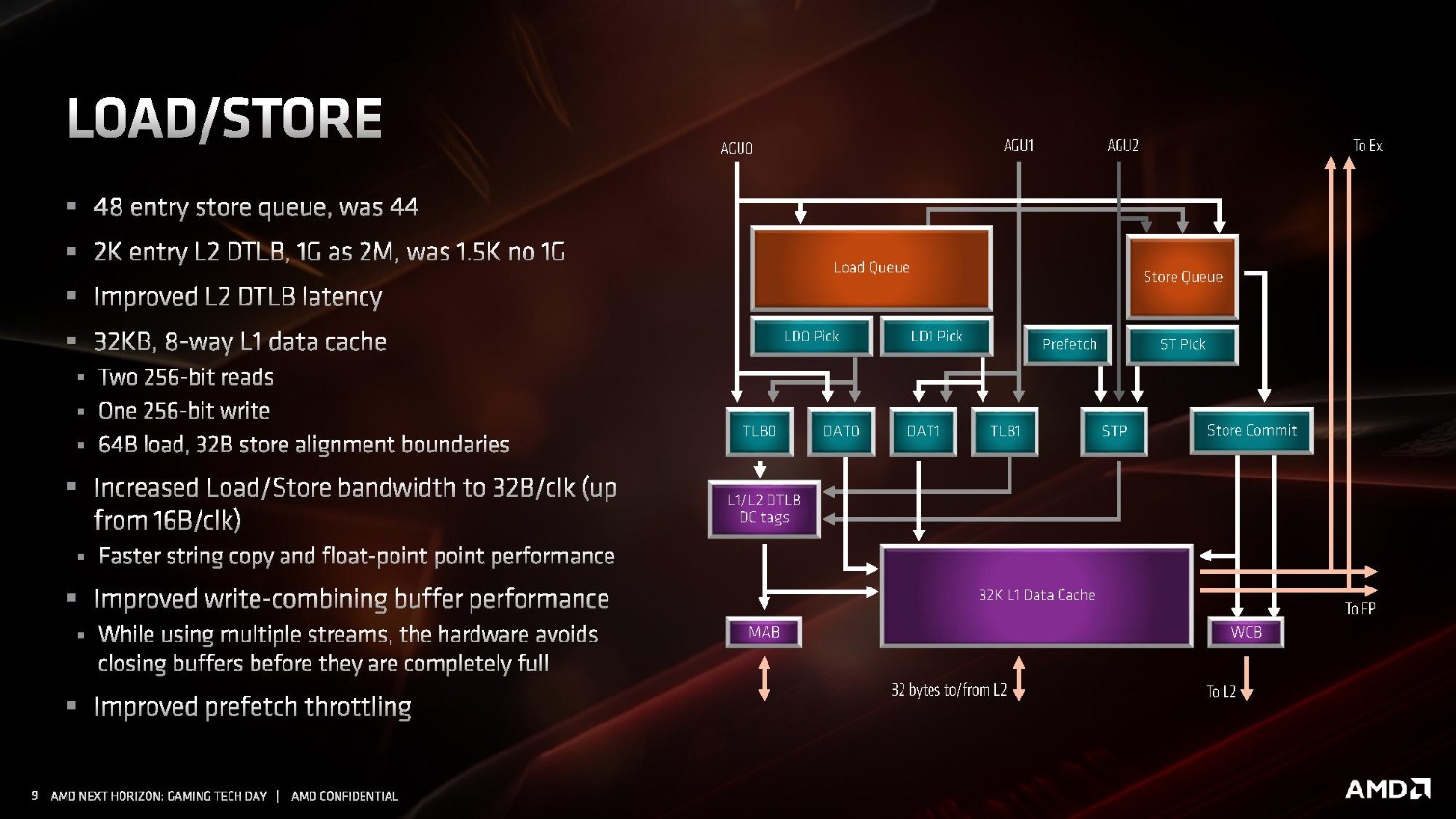
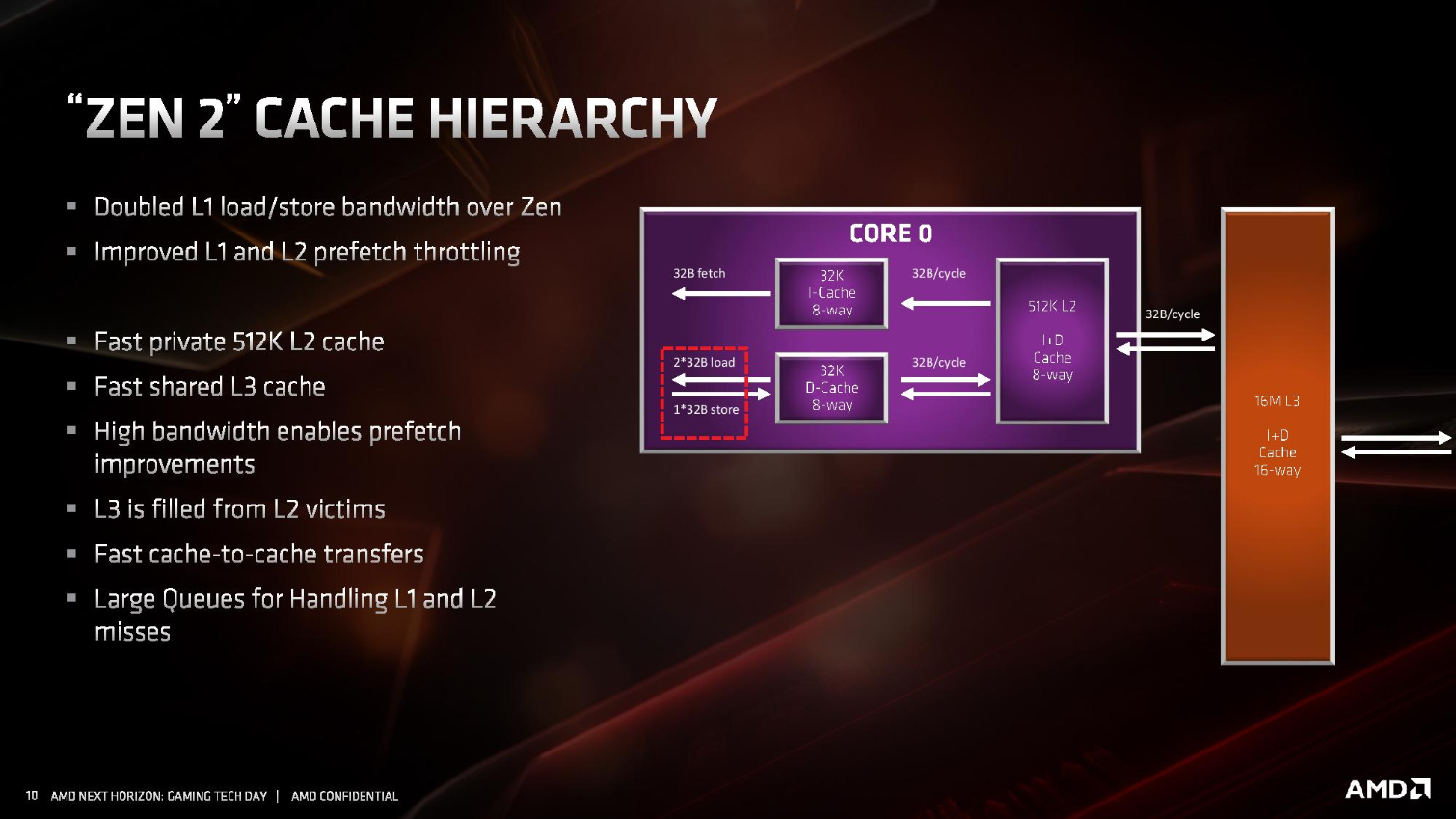

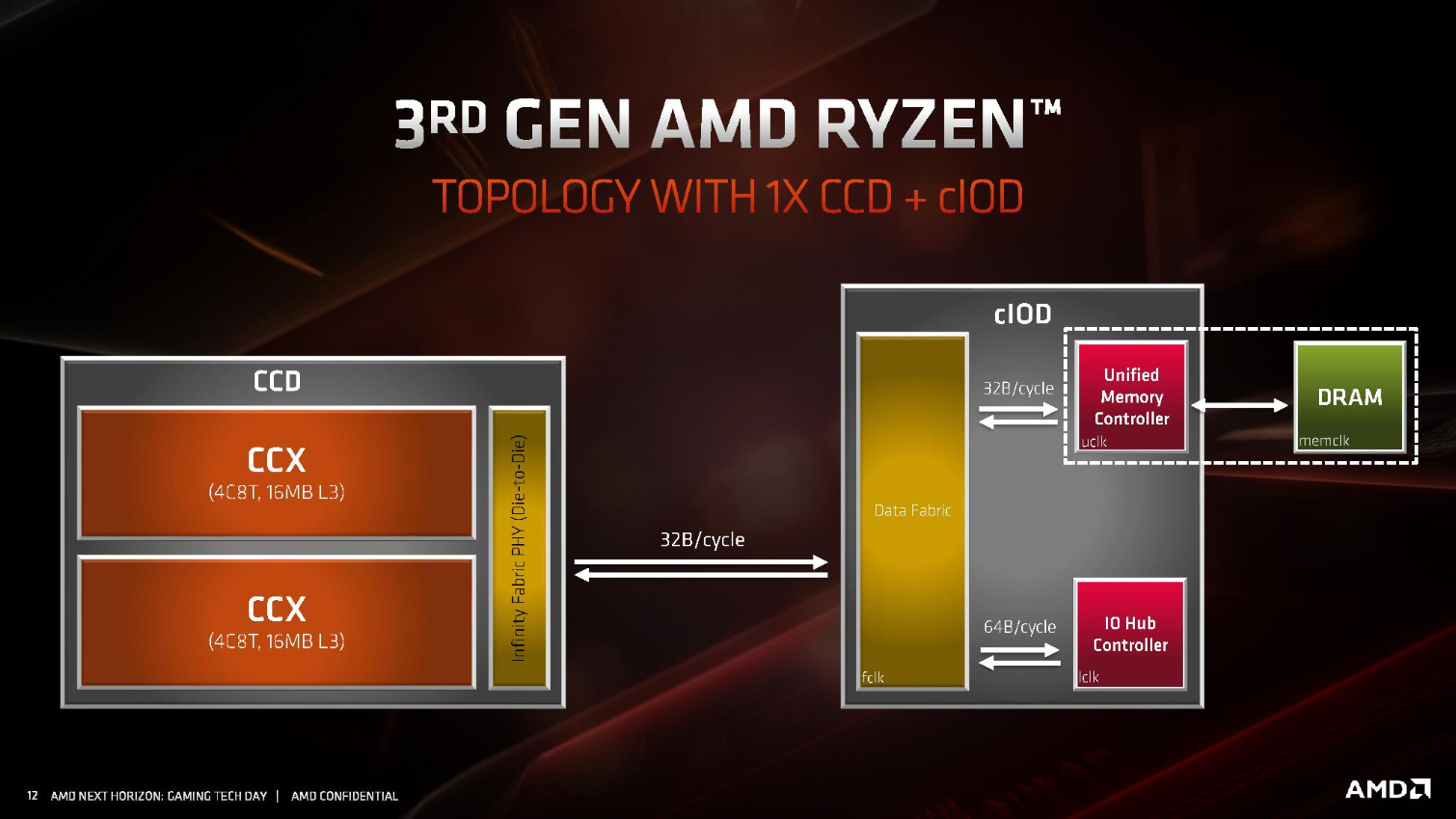
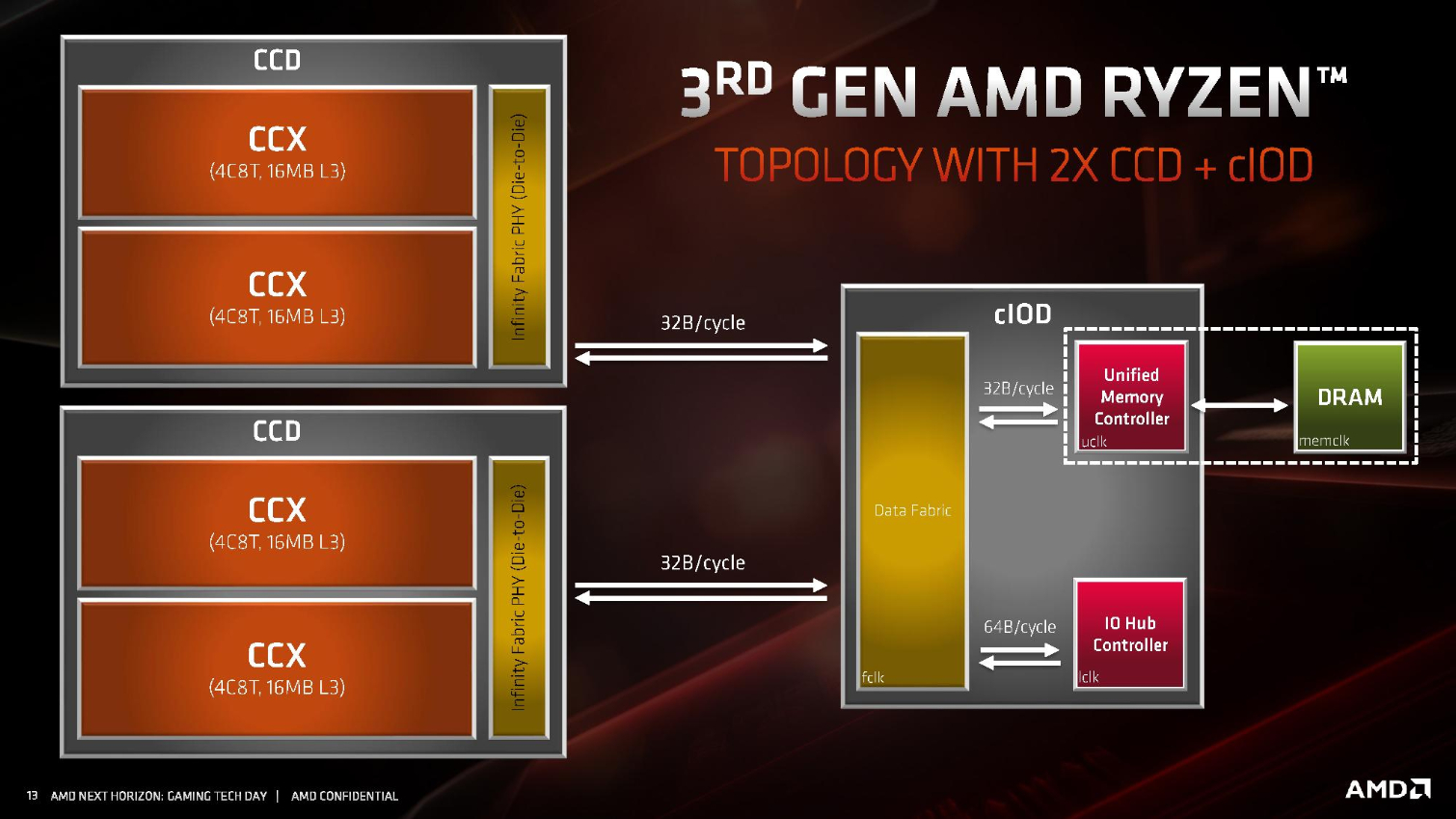
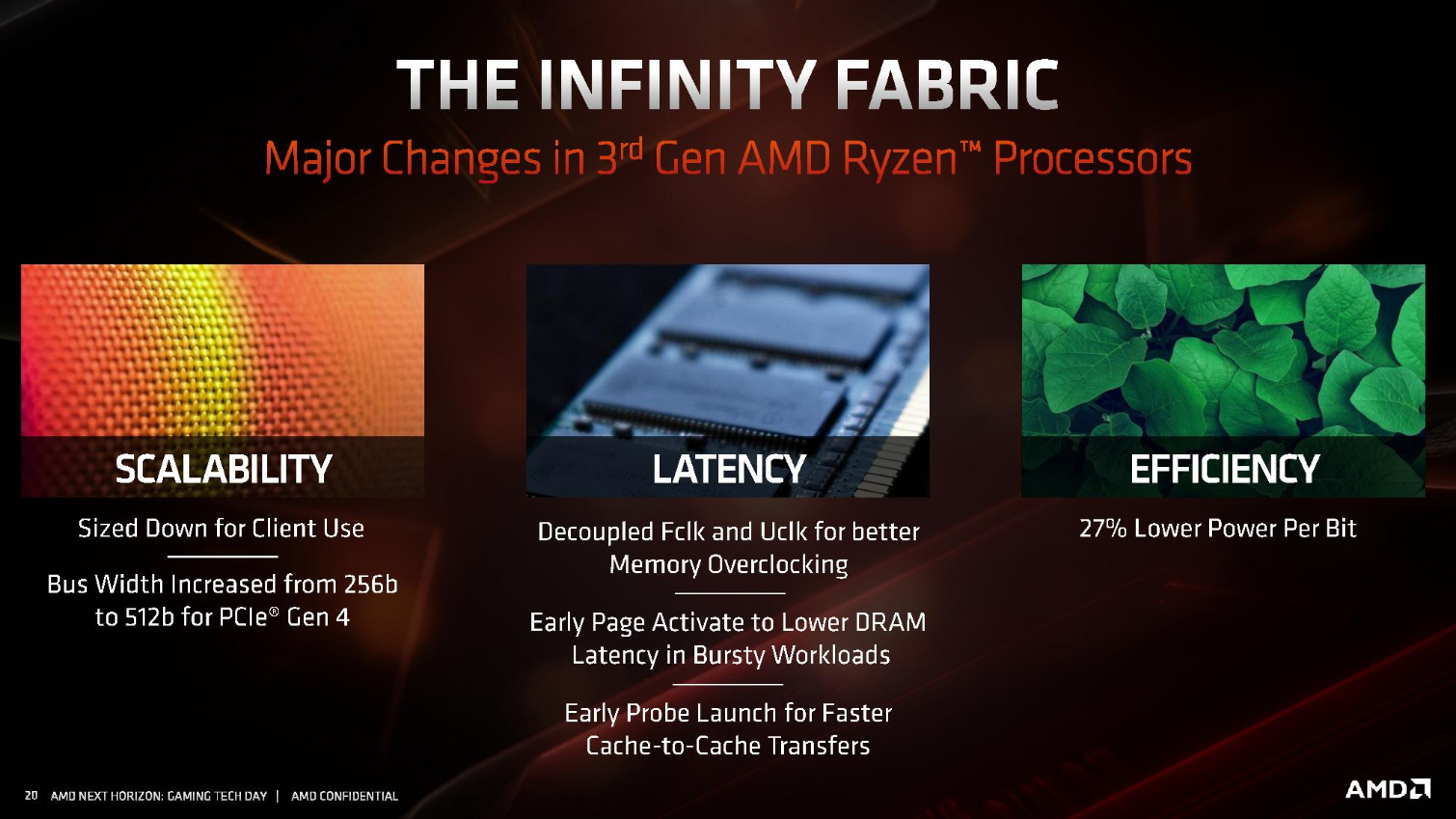
Headline improvements include a doubled micro-op (4K) and L3 cache (32MB), which came at the expense of a slightly smaller L1 instruction cache that is now an 8-way associative 32K block as opposed to the 64K block with 4-way associativity on first-gen Ryzen. AMD also beefed up the Translation Lookaside Buffer (TLB) to 2,000 entries.
Get Tom's Hardware's best news and in-depth reviews, straight to your inbox.
AMD now has a double-stage branch predictor, with its Perceptron predictor handling the first stage while a new TAGE branch predictor, which features larger lookup tables to improve performance, serves as the second stage. That's paired with larger L1 and L2 branch target predictors (BTBs) that increase throughput by reducing stalls. AMD says the improved branch predictor expends extra energy on the front end, but the 30% lower misprediction rate ultimately saves more energy on the backend. A third address generation unit (AGU) also keeps the hungry execution cores fed with data from main memory.
Enter the X570 Chipset
AMD's Ryzen 3000 series processors have dynamic algorithms that adjust parameters based upon several factors, with power delivery and heat dissipation being the chief variables that can unlock extra performance. As such, motherboard selection is going to be a big factor in the amount of performance you receive if you choose to use AMD's Precision Boost Overdrive (PBO - next page) and Auto Overclock features. The X570 motherboard ecosystem has proven to be pricey compared to the previous-gen X470 models, but AMD says that the Ryzen 3000 series processors will operate at full performance at stock settings with X470 motherbaords. You just sacrifice access to the PCIe 4.0 interface.
The actual X570 chipset is a 14nm variant of the 12nm I/O die inside the Ryzen 3000-series processors, which is a clever reuse of the technology that ultimately lowers costs. This chipset is also fully produced by AMD, whereas the X470 chipset came from ASMedia, which says it will continue to produce some chipsets for Ryzen 3000 series processors. AMD uses the smaller 12nm process for the processor's in-package I/O die to leverage the increased frequency potential for the memory controllers. That improves memory data transfer rates, but AMD uses the more economical 14nm variant, which has its memory controllers disabled, for the chipset die.
Most X570 motherboards come with a fan on the chipset to provide active cooling for the chipset, which now consumes ~11-15W compared to the 6W consumed by the X470 chipset. That's due to the power-hungry nature of the PCIe 4.0 interface when it is under full load. Small fans like these tend to be noisy, but our motherboard team is hard at work on the first wave of X570 motherboard reviews and will provide more perspective.
Ryzen 3000-series chips are compatible with most previous-gen motherboards with the AM4 socket, but some updates are left to vendor discretion. As such, you won't be able to drop a new Third-gen Ryzen chip into all X370 and B350 motherboards, and A320's upgrade path is blocked entirely. Due to the uneven application of BIOS updates across the various vendors, and even among different motherboards in the respective product stacks, you'll have to check the CPU support list for your X370 or B350 motherboard to ensure it supports Third-gen Ryzen.

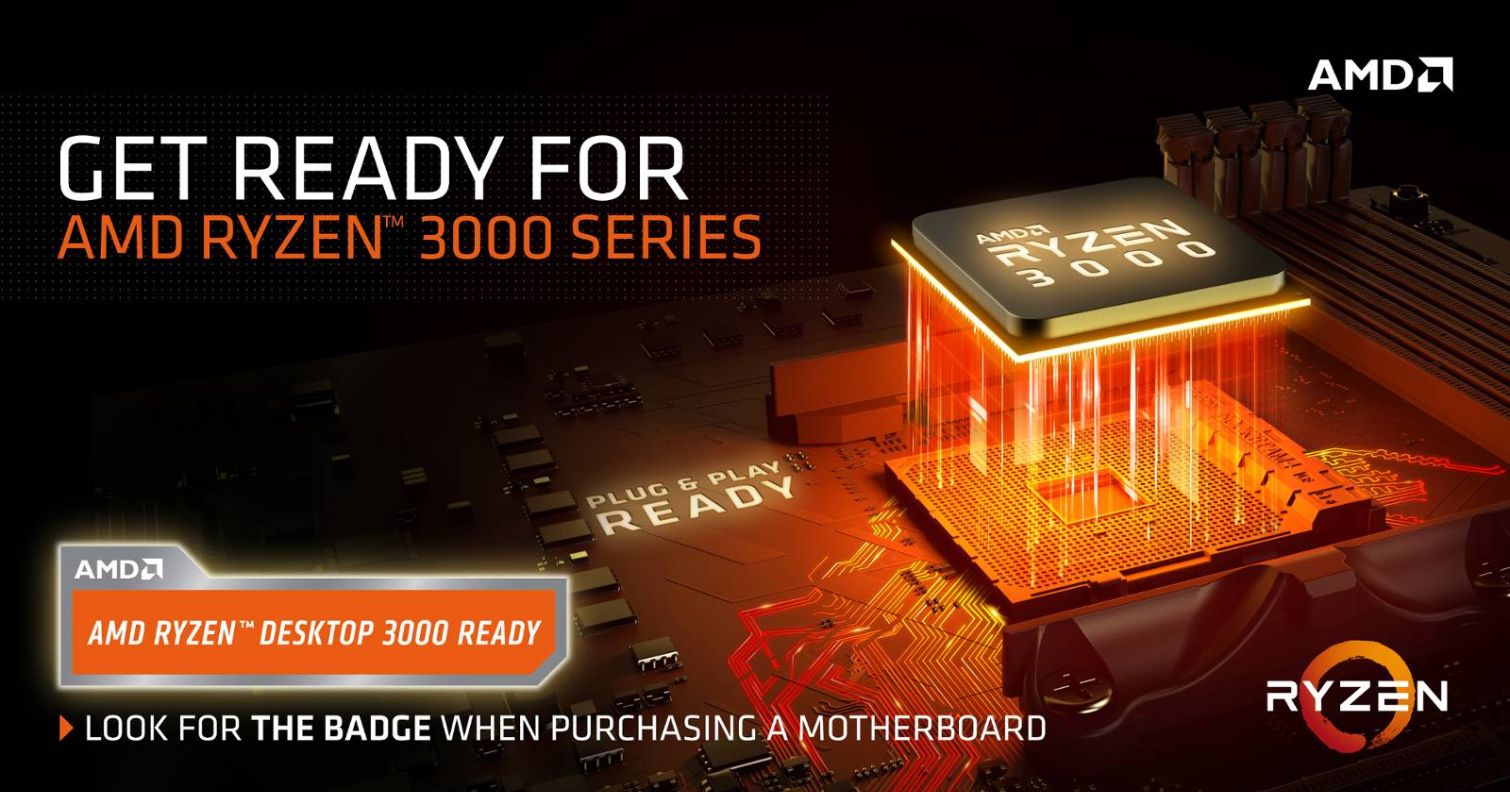
There are plenty of X470 and B450 motherboards still on the market, but some of the boards that have been in the supply chain for a while will need a BIOS update before you install a Third-gen Ryzen processor. As we've seen in the past, that isn't always possible if you don't already have a Ryzen processor or if the motherboard doesn't have an out-of-band BIOS update feature, like BIOS Flashback. AMD also announced that all motherboards that support Ryzen 3000 processors out of the box will come with a new badge to help simplify things.
MORE: Best CPUs
MORE: Intel & AMD Processor Hierarchy
MORE: All CPUs Content
Current page: 7nm Process, Zen 2, and the X570 Chipset
Prev Page Into the 7nm Era Next Page Ryzen 3000 IPC Measurements and Power Consumption
Paul Alcorn is the Editor-in-Chief for Tom's Hardware US. He also writes news and reviews on CPUs, storage, and enterprise hardware.
-
Isokolon too bad there wasn't a 3800X included, would be interesting to see if the price tag for the 3800X over the 3700X is indeed worth itReply -
feelinfroggy777 Nice for worksation task, but disappointing it basically ties Intel in gaming if not just a tad behind.Reply -
salgado18 Reply
It tied to Intel for less money, with a great bundled cooler, and a cheaper platform (edit: and less power too). Also, unless you use a 144Hz monitor, the diference is purely synthetic. Did you expect it to be way faster than a 5 GHz Intel magically?feelinfroggy777 said:Nice for worksation task, but disappointing it basically ties Intel in gaming if not just a tad behind. -
Phaaze88 ReplyAbel Rivera1 said:Thank you so much and to be honest the only reason why I bought the 750tx Corsair psu is because it was 30$, can I ask you if the gtx770 2gb will run battlefield 1 on high?
I can't imagine it would be.Isokolon said:too bad there wasn't a 3800X included, would be interesting to see if the price tag for the 3800X over the 3700X is indeed worth it
If looking at the 3800x as a binned 3700x - that's basically what it would be - grab one if it goes on sale closer to the 3700x's price.
These chips don't overclock any better than their predecessors, which wasn't good to begin with, so whatever extra clocks you get with a 3800x will hardly be noticeable and won't be worth a $50+ price increase over 3700x. -
velocityg4 The overclocking results were disappointing. 4.1Ghz max on all cores. Given that the 3950x does a 4.7Ghz single core turbo boost and the 3900x does 4.6Hz single core turbo boost. I'd have assumed any of the Ryzen 3000 would OC to 4.6/4.7Ghz on all cores with decent air/water cooling.Reply
Power consumption: AIDA 64 seems to punish AMD a lot more than Intel. When you were using Prime95 Intel was punished a lot more. It seems the switch from Prime95 to AIDA 64 gives Intel an unfair advantage in the stress test power consumption test. While Prime95 gave AMD an unfair advantage. I'd suggest using both in reviews or find another torture test that will fully punish both AMD and Intel for a max load test. With such wild variation. I can't see how either is an accurate measure of a CPU under full load.
Example Review: https://www.tomshardware.com/reviews/intel-core-i9-9900k-9th-gen-cpu,5847-11.html
The Intel i9-9900K hit 204.6W in your old reviews stress test. This time it is only 113W.
The AMD Ryzen 2700x hit 104.7W in your old review. Now it is 133W. -
feelinfroggy777 Replysalgado18 said:It tied to Intel for less money, with a great bundled cooler, and a cheaper platform (edit: and less power too). Also, unless you use a 144Hz monitor, the diference is purely synthetic. Did you expect it to be way faster than a 5 GHz Intel magically?
It did tie Intel in gaming. It tied basically the same Intel CPUs that have been on the market since 2015 with Skylake. We are in the back half of 2019 and we see the same gaming performance that we had in 2015 mainstream CPUs.
We know AMD is cheaper and comparing clockspeeds against different architectures between Intel and AMD is silly. But it would be nice to see some tangible improvement regarding fps with CPUs. The GPU still remains king when it comes to a quality gaming build. -
delaro I've seen reviews from 5 different sites and the conclusions bounce all over the place, which makes me think there is much to do on the software optimization side. :unsure: I was expecting gaming FPS to not change all that much with many of the titles being tested have partnered or optimized around Intel.Reply -
jimmysmitty Replyfeelinfroggy777 said:Nice for worksation task, but disappointing it basically ties Intel in gaming if not just a tad behind.
Minus the ability to overclock yes tied. Most people who buy the 9900K will not be buying it to leave it stock.
velocityg4 said:The overclocking results were disappointing. 4.1Ghz max on all cores. Given that the 3950x does a 4.7Ghz single core turbo boost and the 3900x does 4.6Hz single core turbo boost. I'd have assumed any of the Ryzen 3000 would OC to 4.6/4.7Ghz on all cores with decent air/water cooling.
Power consumption: AIDA 64 seems to punish AMD a lot more than Intel. When you were using Prime95 Intel was punished a lot more. It seems the switch from Prime95 to AIDA 64 gives Intel an unfair advantage in the stress test power consumption test. While Prime95 gave AMD an unfair advantage. I'd suggest using both in reviews or find another torture test that will fully punish both AMD and Intel for a max load test. With such wild variation. I can't see how either is an accurate measure of a CPU under full load.
Example Review: https://www.tomshardware.com/reviews/intel-core-i9-9900k-9th-gen-cpu,5847-11.html
The Intel i9-9900K hit 204.6W in your old reviews stress test. This time it is only 113W.
The AMD Ryzen 2700x hit 104.7W in your old review. Now it is 133W.
Its what I wanted to know. Ryzen has always been pushed to the limit in terms of clock speed and Zen 2 is no different it seems. Little to no headroom. AnandTech was able to get it to 4.3GHz all core but with manual OCing it seems to disable boost clocking which in turn cuts 300MHz from single core performance.
As for the power consumption, the differences are probably what they prioritize. I know Prime 95 heavily uses AVX which is a power hog. Not as sure on AIDA 64 since I never used it. I always use Prime 95 and IBT for stability.
feelinfroggy777 said:It did tie Intel in gaming. It tied basically the same Intel CPUs that have been on the market since 2015 with Skylake. We are in the back half of 2019 and we see the same gaming performance that we had in 2015 mainstream CPUs.
We know AMD is cheaper and comparing clockspeeds against different architectures between Intel and AMD is silly. But it would be nice to see some tangible improvement regarding fps with CPUs. The GPU still remains king when it comes to a quality gaming build.
Its not silly to compare clock speeds as those can be advantages. Intel still clearly has a clock speed advantage and that advantage will keep them priced higher. We might see some drops but I doubt we will see enough to make it feel like Athlon 64 again.
As much crap as people give Intel for getting stuck at 14nm I have to give them props for having a 5 year old process tech beat modern process tech, especially one that's supposed to be "half" the size. I know its not quite as most 7nms out there are still less dense than Intels initial 10nm plans but still it goes to show that the nm part has become pointless and a marketing gimmick more than anything.
The only thing a CPU matters gaming wise is how long it will last before it will bottleneck the GPU. While its still early the clock speed and overclocking advantage Intel has might make their CPUs last longer in gaming than Zen 2. Only time will tell but maybe AMD will get a better process tech in a few years and finally compete like the old days. -
martinch Reply
Unless you're trying to give an indication of "performance-per-MHz" of varying architectures, yes, comparing clock speeds between differing architectures is a fundamentally invalid comparison (it's also not exactly an accurate predictor of per-core performance).jimmysmitty said:Its not silly to compare clock speeds as those can be advantages. -
feelinfroggy777 Replyjimmysmitty said:
Its not silly to compare clock speeds as those can be advantages. Intel still clearly has a clock speed advantage and that advantage will keep them priced higher. We might see some drops but I doubt we will see enough to make it feel like Athlon 64 again.
Clockspeeds between AMD and Intel are not apples to apples. Bulldozer hit 5ghz and it was a terrible CPU. Just because it could hit 5ghz, did not make a good chip.
